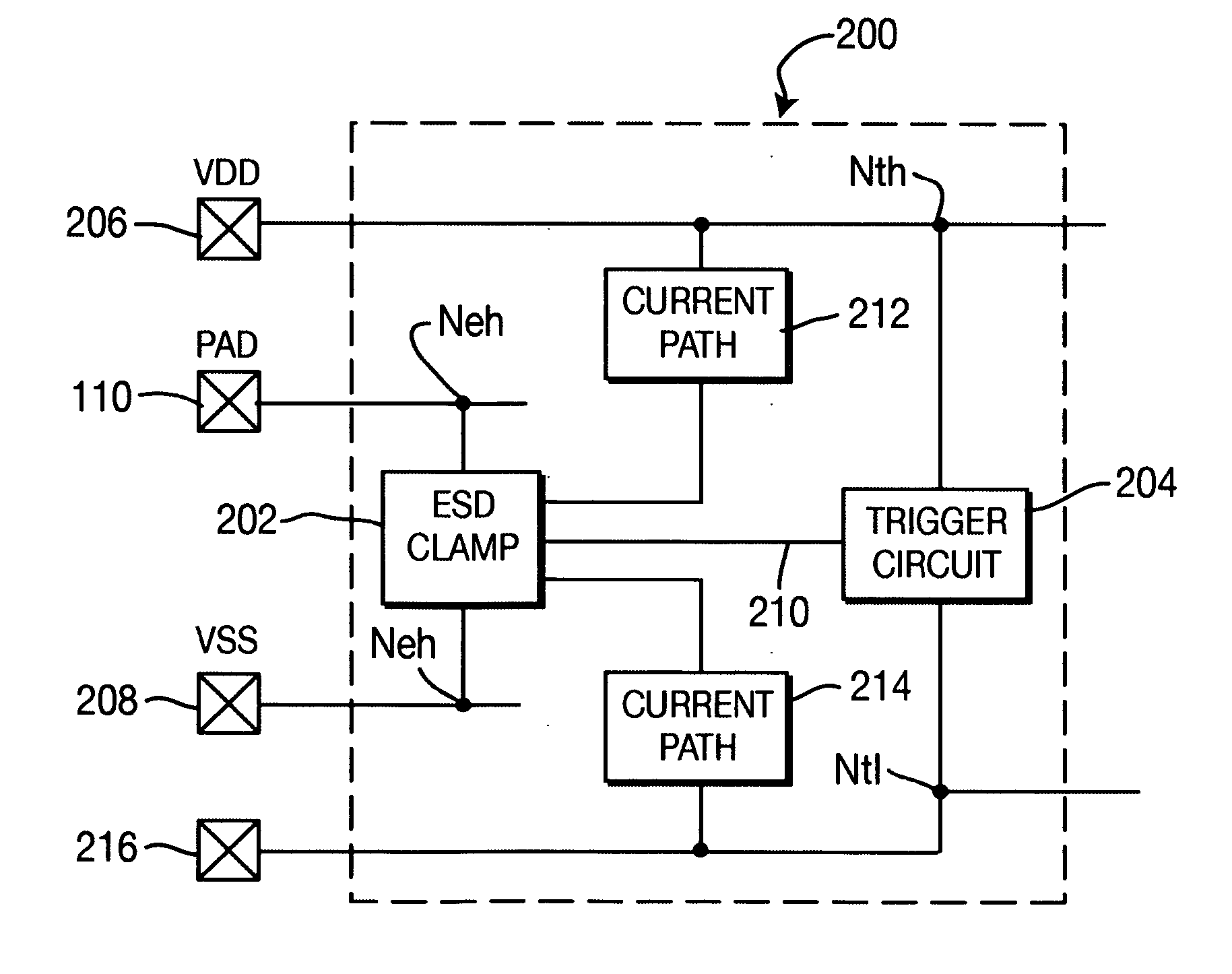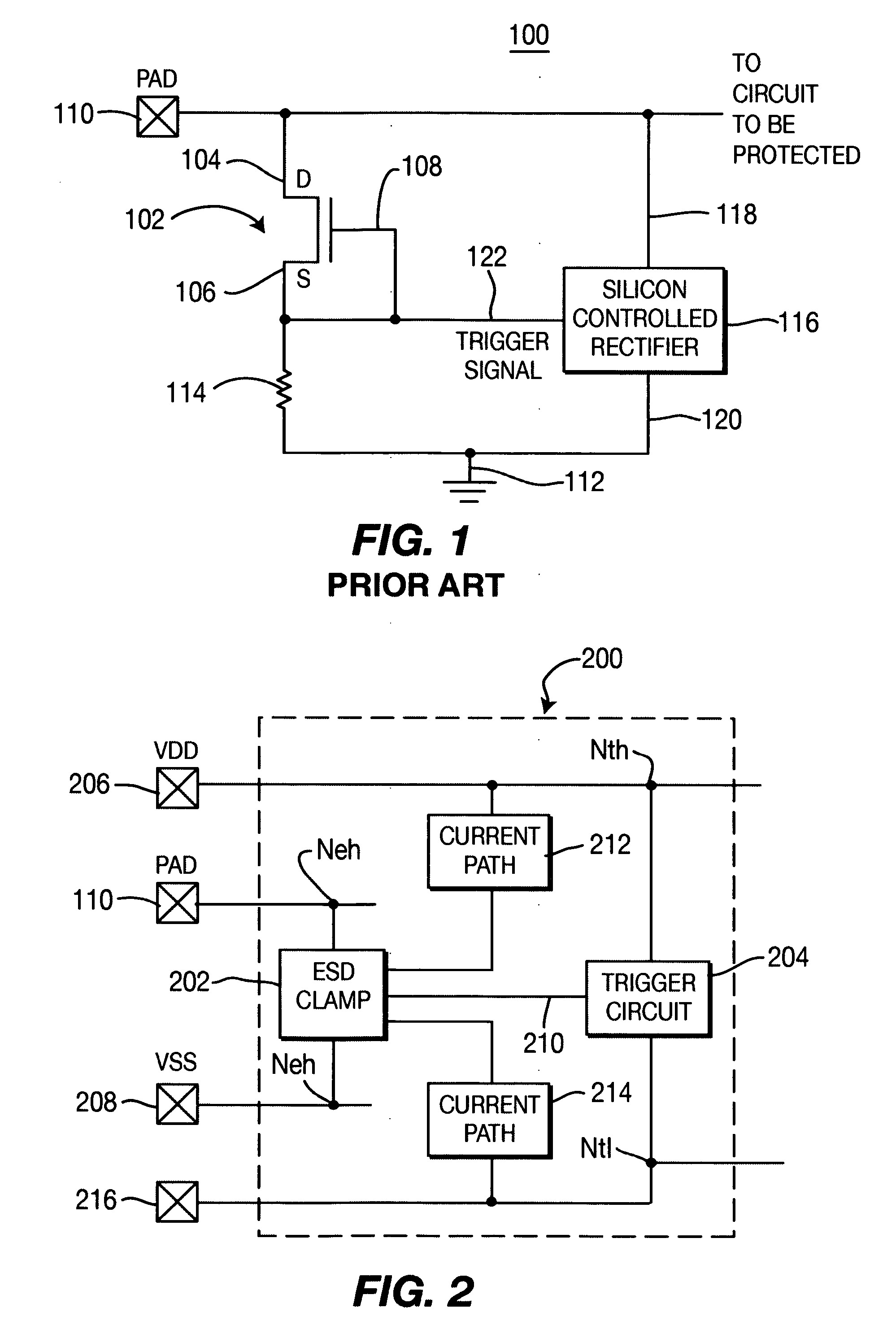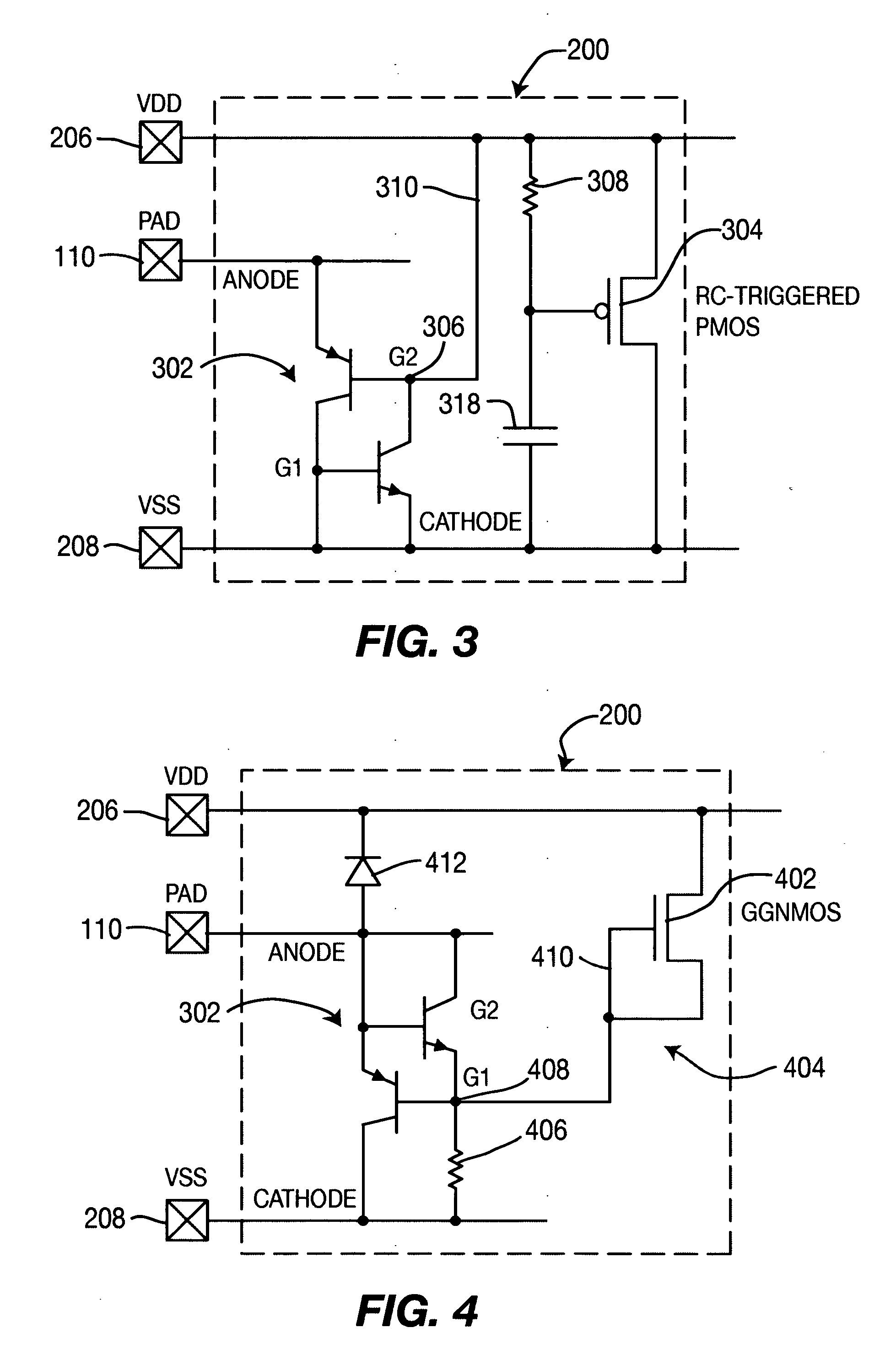Apparatus for ESD protection
a technology of electrostatic discharge and protective circuitry, applied in the direction of electrical apparatus, emergency protective arrangements for limiting excess voltage/current, transformers, etc., can solve the problems of esd damage, ics damage, and expensive product repairs
- Summary
- Abstract
- Description
- Claims
- Application Information
AI Technical Summary
Problems solved by technology
Method used
Image
Examples
first embodiment
[0022]FIG. 3 depicts a circuit diagram of the invention, an ESDPC 200, as presented in FIG. 2. In this embodiment, implementation of the shunt subcircuit is accomplished by a silicon-controlled rectifier (SCR) 302. The SCR 302 is coupled between pad 110 (PAD=SCR Anode=Neh) and second voltage reference potential (VSS) 208 (SCR Cathode / G1=VSS=Nel). In this embodiment, current path 214 is a short that connects node 208 to node 216. A first base / collector node (G2) 306 is coupled to first voltage reference potential VDD. To trigger the SCR 302, a trigger circuit is added between VDD (Nth) and VSS (NtI). In one embodiment of the invention, the trigger circuit 204 of FIG. 2 is a PMOS 304 triggered by an RC circuit 308 / 310 connected thereto. Connection 310 between node 306 (G2) and VDD pad 206 acts as both a trigger connection 210 (FIG. 2) and conductive path between Neh and Nth (path 212 in FIG. 2).
[0023] In operation, a first current will flow from pad 110 through the Anode-G2 diode of t...
second embodiment
[0028]FIG. 4 depicts a circuit diagram of the invention, an ESDPC 200, as presented in FIG. 2. In this embodiment, implementation of the shunt subcircuit is again accomplished by an SCR 302. The SCR 302 is coupled between pad 110 and VSS (Anode / G2 coupled to PAD, Cathode coupled to VSS). A trigger circuit 404 is constructed between first voltage reference potential VDD 206 and second voltage reference potential VSS 208 as in the previous embodiments. However, trigger circuit 404 includes a GGNMOS 402 with a series resistor 406. A node 408 between the GGNMOS 402 and series resistor 406 is coupled to the G1 node (through path 410) of the SCR 302 to trigger the SCR 302 during ESD operation. Additionally, a diode 412 is connected between pad 110 and first voltage reference potential VDD 206. To reduce capacitance at the pad 110, the G2 node of the SCR 302 can be optionally coupled to first voltage reference potential VDD 206.
[0029] When an ESD event arrives at the pad 110, a first curre...
PUM
 Login to View More
Login to View More Abstract
Description
Claims
Application Information
 Login to View More
Login to View More - R&D
- Intellectual Property
- Life Sciences
- Materials
- Tech Scout
- Unparalleled Data Quality
- Higher Quality Content
- 60% Fewer Hallucinations
Browse by: Latest US Patents, China's latest patents, Technical Efficacy Thesaurus, Application Domain, Technology Topic, Popular Technical Reports.
© 2025 PatSnap. All rights reserved.Legal|Privacy policy|Modern Slavery Act Transparency Statement|Sitemap|About US| Contact US: help@patsnap.com



